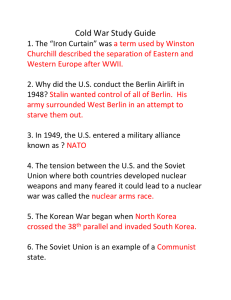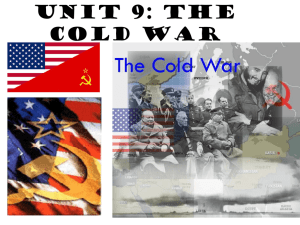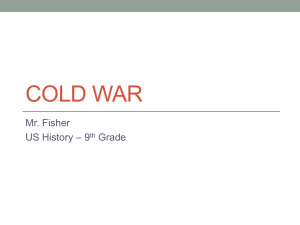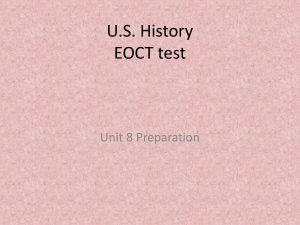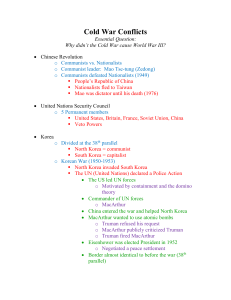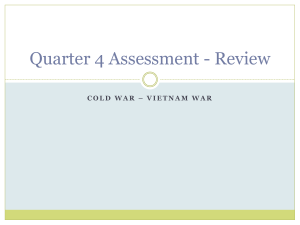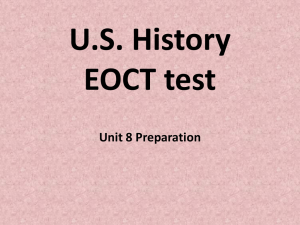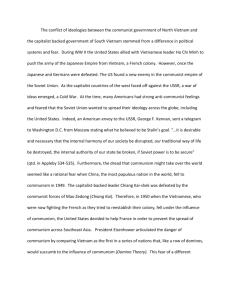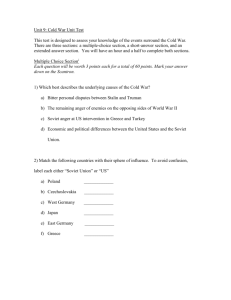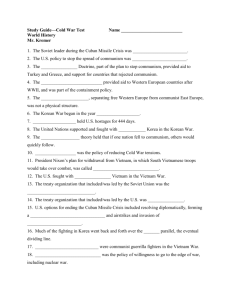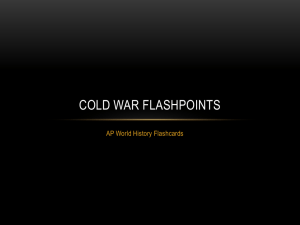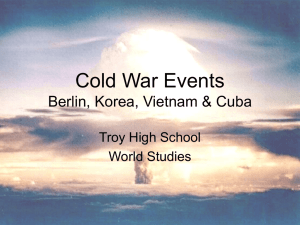Notes II
advertisement
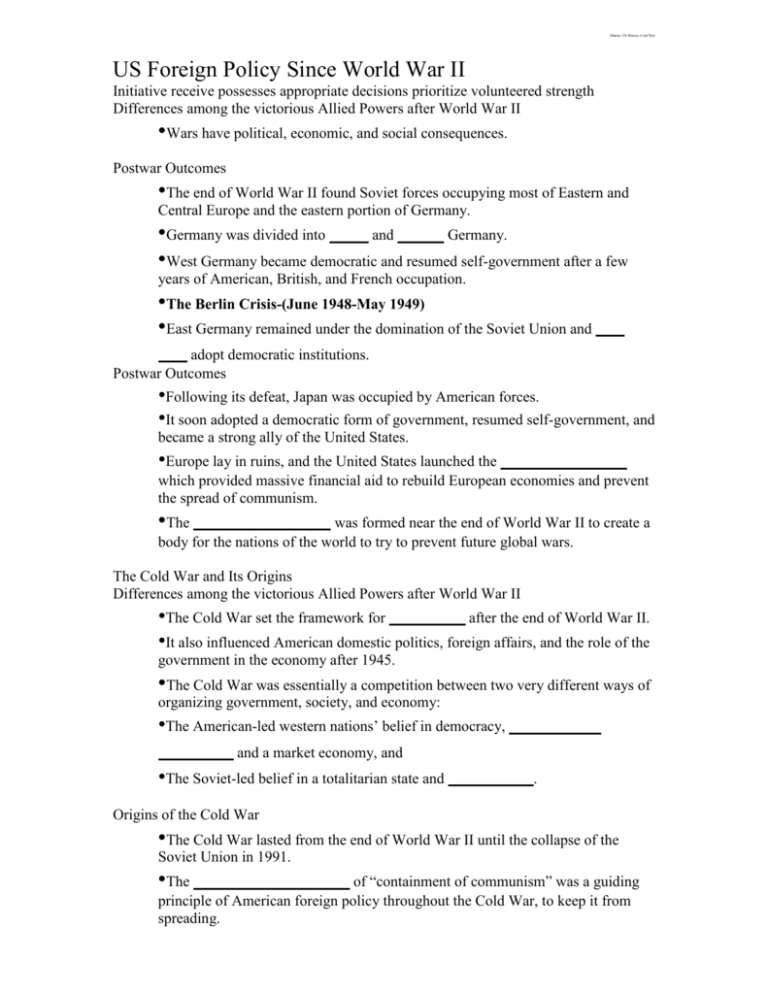
Martin: US History Cold War US Foreign Policy Since World War II Initiative receive possesses appropriate decisions prioritize volunteered strength Differences among the victorious Allied Powers after World War II •Wars have political, economic, and social consequences. Postwar Outcomes •The end of World War II found Soviet forces occupying most of Eastern and Central Europe and the eastern portion of Germany. •Germany was divided into East and West Germany. •West Germany became democratic and resumed self-government after a few years of American, British, and French occupation. •The Berlin Crisis-(June 1948-May 1949) •East Germany remained under the domination of the Soviet Union and did not adopt democratic institutions. Postwar Outcomes •Following its defeat, Japan was occupied by American forces. •It soon adopted a democratic form of government, resumed self-government, and became a strong ally of the United States. •Europe lay in ruins, and the United States launched the Marshall Plan which provided massive financial aid to rebuild European economies and prevent the spread of communism. •The United Nations was formed near the end of World War II to create a body for the nations of the world to try to prevent future global wars. The Cold War and Its Origins Differences among the victorious Allied Powers after World War II •The Cold War set the framework for 45 years after the end of World War II. •It also influenced American domestic politics, foreign affairs, and the role of the government in the economy after 1945. •The Cold War was essentially a competition between two very different ways of organizing government, society, and economy: •The American-led western nations’ belief in democracy, individual freedom and a market economy, and •The Soviet-led belief in a totalitarian state and socialism. Origins of the Cold War •The Cold War lasted from the end of World War II until the collapse of the Soviet Union in 1991. •The Truman Doctrine of “containment of communism” was a guiding principle of American foreign policy throughout the Cold War, to keep it from spreading. Martin: US History Cold War •The North Atlantic Treaty Organization (NATO) was formed as a defensive alliance among the United States and western European countries to prevent a Soviet invasion of Western Europe. •Soviet allies in eastern Europe formed the Warsaw Pact and for nearly 50 years both sides maintained large military forces facing each other in Europe. Origins of the Cold War •The communist takeover in China shortly after World War II increased American fears of communist domination of most of the world. •Soviets explode Atomic Bomb in the 1950s •the threat of a nuclear war that would destroy both countries was ever-present throughout the Cold War. •America, under President Eisenhower, adopted a policy of “massive retaliation” to deter any nuclear strike by the Soviets. American Containment Policies The Korean War •American involvement in the Korean War in the early 1950s reflected the American policy of containment of communism. •After communist North Korea invaded South Korea, American military forces led a counterattack that drove deep into North Korea itself. The Korean War •Communist Chinese forces came into the war on the side of North Korea and the war threatened to widen, but eventually ended in a Korea free of communist occupation. stalemate with South Martin: US History Cold War American Containment Policies The Vietnam War •American involvement in Vietnam also reflected the Cold War policy of containment of Communism. American Containment Policies The Vietnam War •The communist government of North Vietnam attempted to install through force a communist government in South Vietnam. The Vietnam War •The United States helped South Vietnam to resist. •The American military buildup in Vietnam began under President John Kennedy. •After Kennedy’s assassination in 1963, the buildup was intensified under President Lyndon Johnson. The Vietnam War •The country became bitterly divided. •While there was support for the American military and conduct of the war among many Americans, others opposed the war and active opposition to the war mounted, especially on college campuses. The Vietnam War •Nixon instituted the policy of “Vietnamization” the withdrawing of American troops and replacing them with South Vietnamese forces while maintaining military aid to the South Vietnamese. The Vietnam War •Ultimately “Vietnamization” failed when South Vietnamese proved unable to resist invasion by the Soviet-supplied North Vietnamese army •In 1975, both North and South Vietnam were merged under communist control Cuba •Cuba was also a site of Cold War confrontations. •Fidel Castro led a communist revolution that took over Cuba in the late 1950s. Cuba •Many Cubans fled to Florida and later attempted to invade Cuba and overthrow Castro. •This “Bay of Pigs” invasion failed. Cuba •In 1962, the Soviet Union stationed missiles in Cuba, instigating the Cuban Missile Crisis. Cuba •President Kennedy ordered the Soviets to remove their missiles and for several days the world was on the brink of nuclear war. •Eventually, the Soviet leadership “blinked” and removed their missiles.
